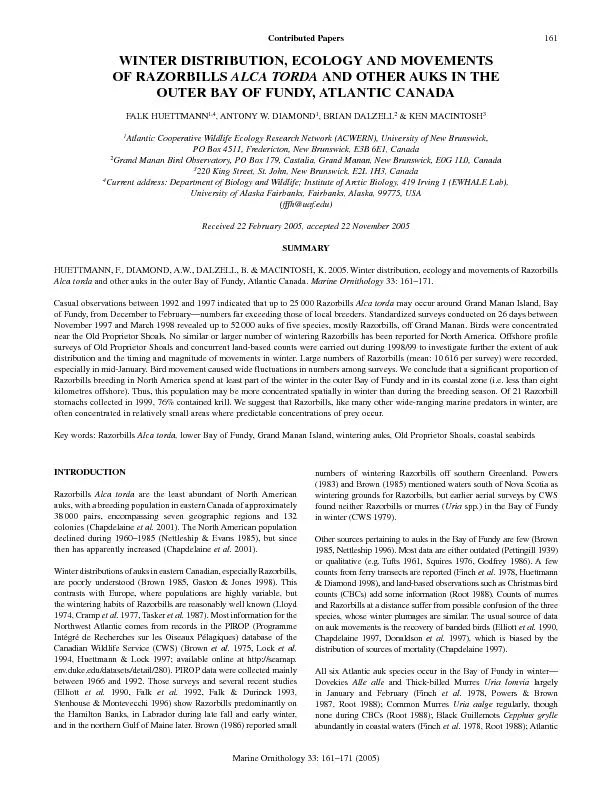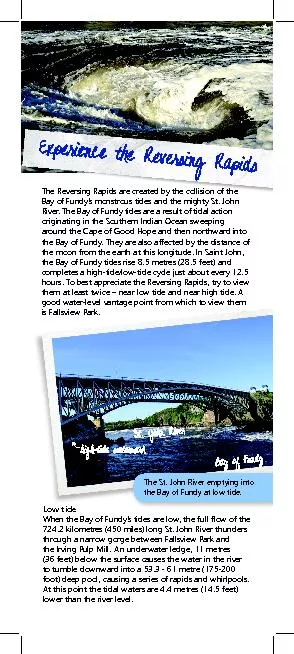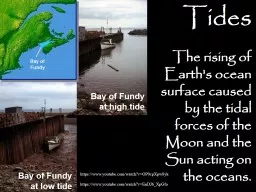PDF-et al.: Razorbills and other auks in the outer Bay of Fundy
Author : alexa-scheidler | Published Date : 2016-07-19
Huettmann Marine Ornithology 33 161150171 2005 Contributed Papers INTRODUCTION Razorbills Alca torda are the least abundant of North American auks with a breeding
Presentation Embed Code
Download Presentation
Download Presentation The PPT/PDF document "et al.: Razorbills and other auks in the..." is the property of its rightful owner. Permission is granted to download and print the materials on this website for personal, non-commercial use only, and to display it on your personal computer provided you do not modify the materials and that you retain all copyright notices contained in the materials. By downloading content from our website, you accept the terms of this agreement.
et al.: Razorbills and other auks in the outer Bay of Fundy: Transcript
Download Rules Of Document
"et al.: Razorbills and other auks in the outer Bay of Fundy"The content belongs to its owner. You may download and print it for personal use, without modification, and keep all copyright notices. By downloading, you agree to these terms.
Related Documents














